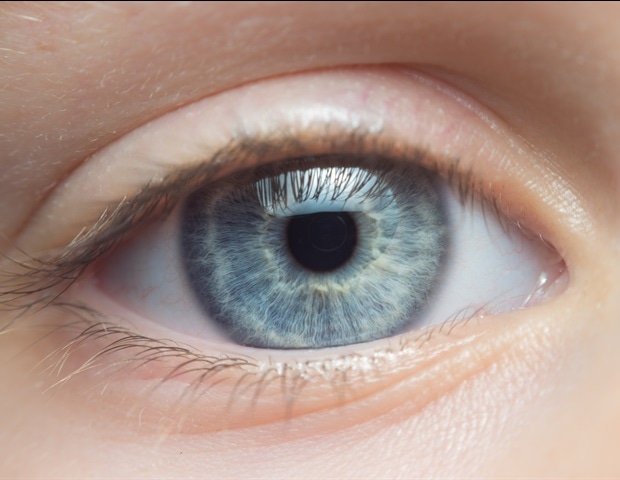
Until recently, researchers could mainly observe the eye cornea through a close microscope contact with living, or dead cells. Many efforts and different methods have been attempted at MIT, Harvard and other prestigious academic centres worldwide to develop this method. The scientific community was looking to discover a non-invasive and remote methodology to study the multidimensional nature of the eye, in its full extent. Progresses have been made, but not to the level of attaining a microscopic precision - until this year.
In Warsaw, a group of scientists working at the International Centre For Translational Eye Research (ICTER) made a remarkable discovery.
"We have found a way to better control the path of light to and from the fundus of the eye. This is a fairly simple idea, but it works fantastically. By using a long multimode fiber, we can illuminate a sample with several hundred laser beams that do not interact with each other because they are time delayed. Thanks to this we can non-invasively "slice" our sample in the computer but with the same image quality as in a very good brightfield microscope. We can now distinguish, differentiate and examine the individual layers of the cornea on computer screens, with full accuracy, just as if we were looking through a real microscope..." - affirms the leader of this research, ICTER's Chair prof. Maciej Wojtkowski.
In their study "Multimode fiber enables control of spatial coherence in Fourier-domain full-field optical coherence tomography for in vivo corneal imaging" published in an Optics Letters' journal, the authors Egidijus Auksorius, Dawid Borycki and Maciej Wojtkowski describe how they reached this result: by using a laser light to illuminate the eye in a way which has never been tried before.
Because of its physical properties, laser is much more sensitive and registers more information about its travel inside the eye, than white light. This is well known by scientist, who have attempted to laser scan the eye before, but the difficulty they struggled with, until this research has succeeded, was the over-sensitivity of the laser light. It simply delivered an excessive amount of data obtained from the light scattering, making it difficult to isolate the exact clean image, when the beam travelled across every layer of the cornea.
How did ICTER researchers overcome this obstacle? By using multimode fiber like a tunnel with several hundred lanes, Auksorius, Borycki and Wojtkowski sent the beam through a 300-meters distance small core optical fiber, in order to eliminate the "junk data". Thanks to the long distance, the different laser modes generated in the fiber did not connect nor "talked" with each other, therefore they were "cross-talk-free", producing an effect denominated spatial coherence reduction. As a result, the laser beam reached all the eye layers in un undisturbed journey, delivering an ultrafast in vivo volumetric imaging of the human cornea, without causing risk to the retina.
Why is this study important and how does it translate into our ordinary lives? The finding is indeed stunning in its simplicity and effectiveness. By physically extending the laser light illuminating the eye, the scientists have exponentially improved the precision of the cornea imaging, using a non invasive, non-contact and no-anestesia required method. Applied in Ophthalmology, this finding will enable doctors to microscopically observe every layer of the patient's cornea in order to improve the diagnosis, without having to recur to painful interventional procedures.
Auksorius, E., et al. (2021) Multimode fiber enables control of spatial coherence in Fourier-domain full-field optical coherence tomography for in vivo corneal imaging. Optics Letters. doi.org/10.1364/OL.417178.
https://news.google.com/__i/rss/rd/articles/CBMihAFodHRwczovL3d3dy5uZXdzLW1lZGljYWwubmV0L25ld3MvMjAyMTA3MjkvSUNURVItc2NpZW50aXN0cy1pbXByb3ZlLXRoZS1wcmVjaXNpb24tb2YtY29ybmVhLWltYWdpbmctdXNpbmctYS1ub24taW52YXNpdmUtbWV0aG9kLmFzcHjSAYgBaHR0cHM6Ly93d3cubmV3cy1tZWRpY2FsLm5ldC9hbXAvbmV3cy8yMDIxMDcyOS9JQ1RFUi1zY2llbnRpc3RzLWltcHJvdmUtdGhlLXByZWNpc2lvbi1vZi1jb3JuZWEtaW1hZ2luZy11c2luZy1hLW5vbi1pbnZhc2l2ZS1tZXRob2QuYXNweA?oc=5
2021-07-30 00:10:00Z
CBMihAFodHRwczovL3d3dy5uZXdzLW1lZGljYWwubmV0L25ld3MvMjAyMTA3MjkvSUNURVItc2NpZW50aXN0cy1pbXByb3ZlLXRoZS1wcmVjaXNpb24tb2YtY29ybmVhLWltYWdpbmctdXNpbmctYS1ub24taW52YXNpdmUtbWV0aG9kLmFzcHjSAYgBaHR0cHM6Ly93d3cubmV3cy1tZWRpY2FsLm5ldC9hbXAvbmV3cy8yMDIxMDcyOS9JQ1RFUi1zY2llbnRpc3RzLWltcHJvdmUtdGhlLXByZWNpc2lvbi1vZi1jb3JuZWEtaW1hZ2luZy11c2luZy1hLW5vbi1pbnZhc2l2ZS1tZXRob2QuYXNweA
Bagikan Berita Ini














0 Response to "ICTER scientists improve the precision of cornea imaging using a non-invasive method - News-Medical.net"
Post a Comment